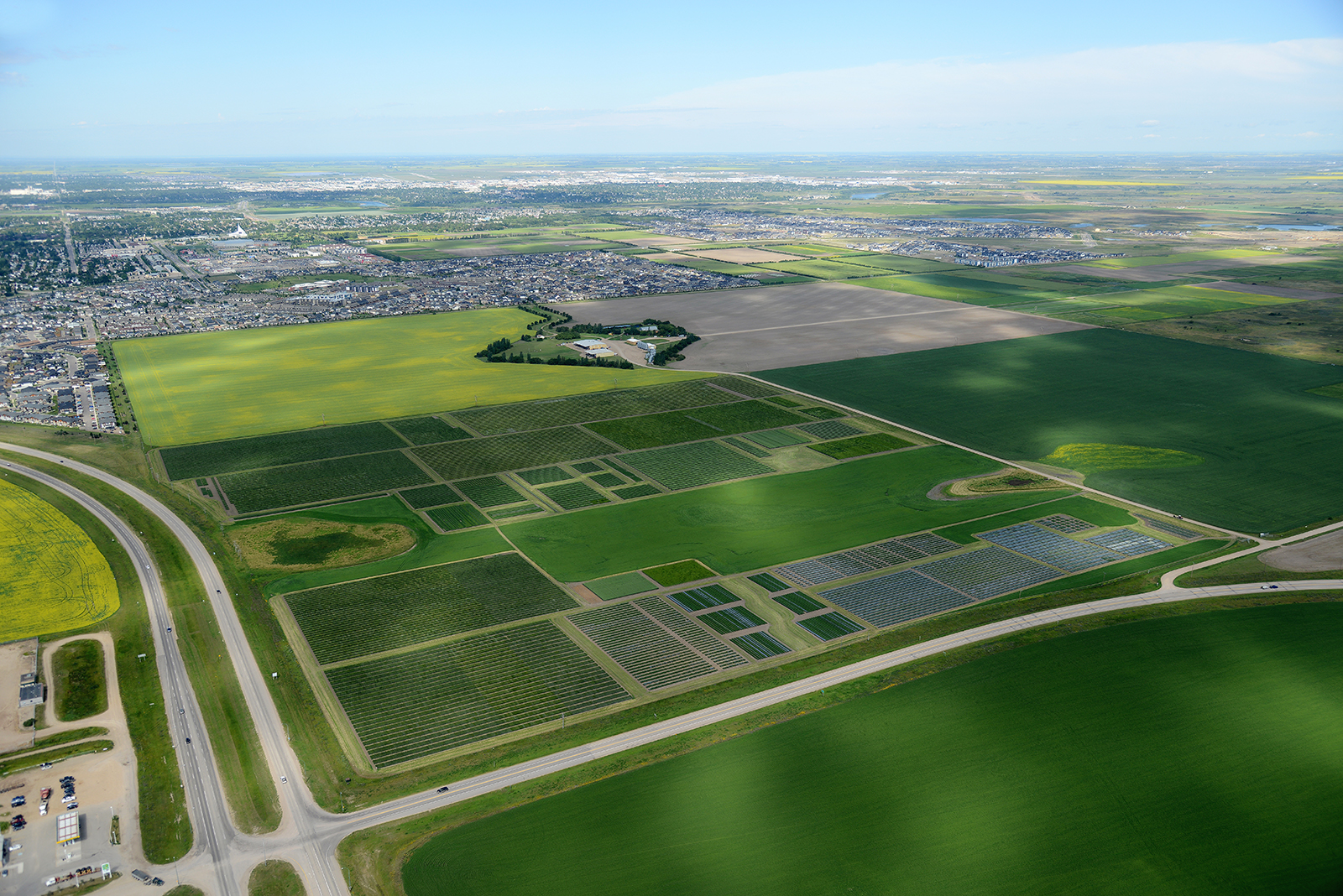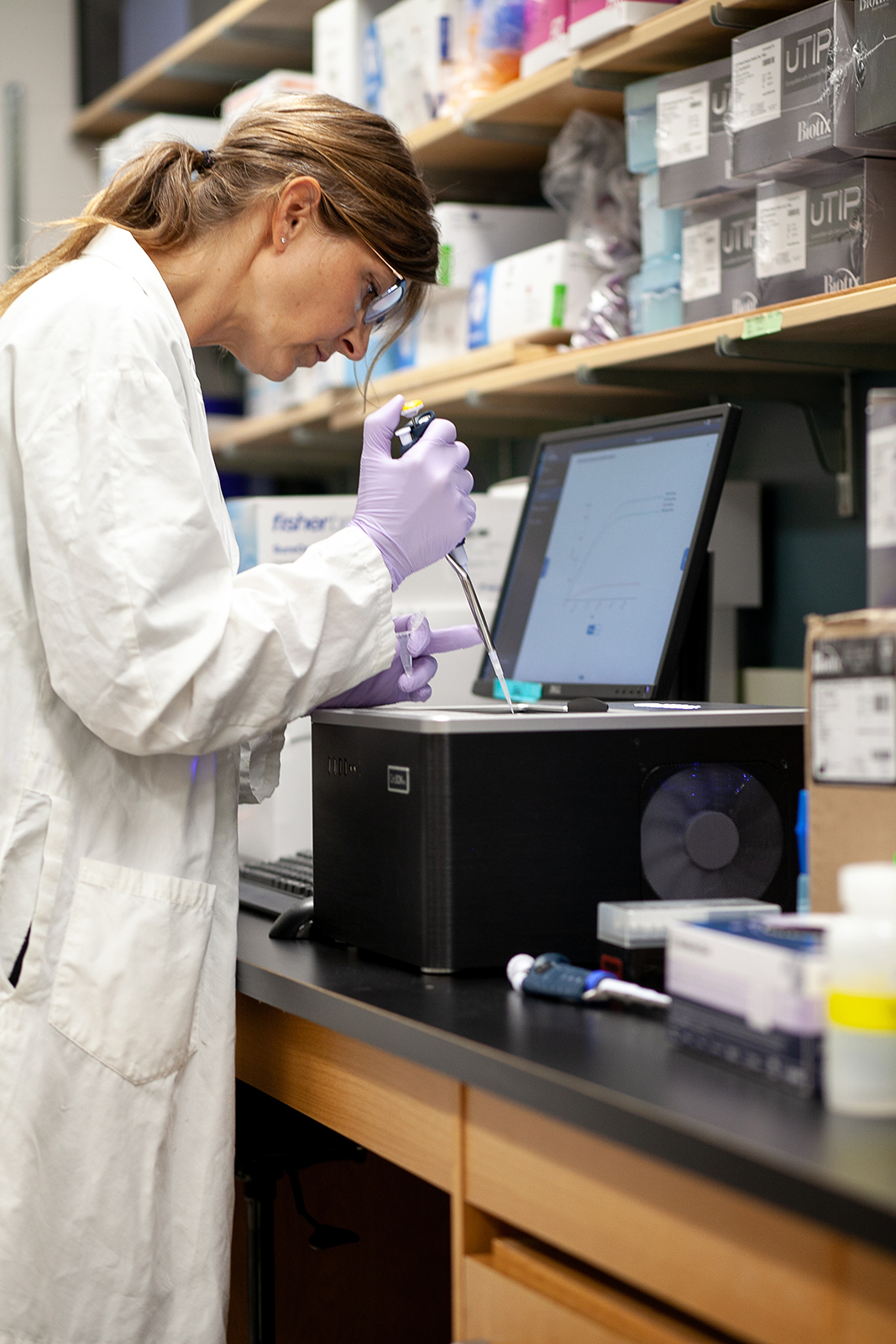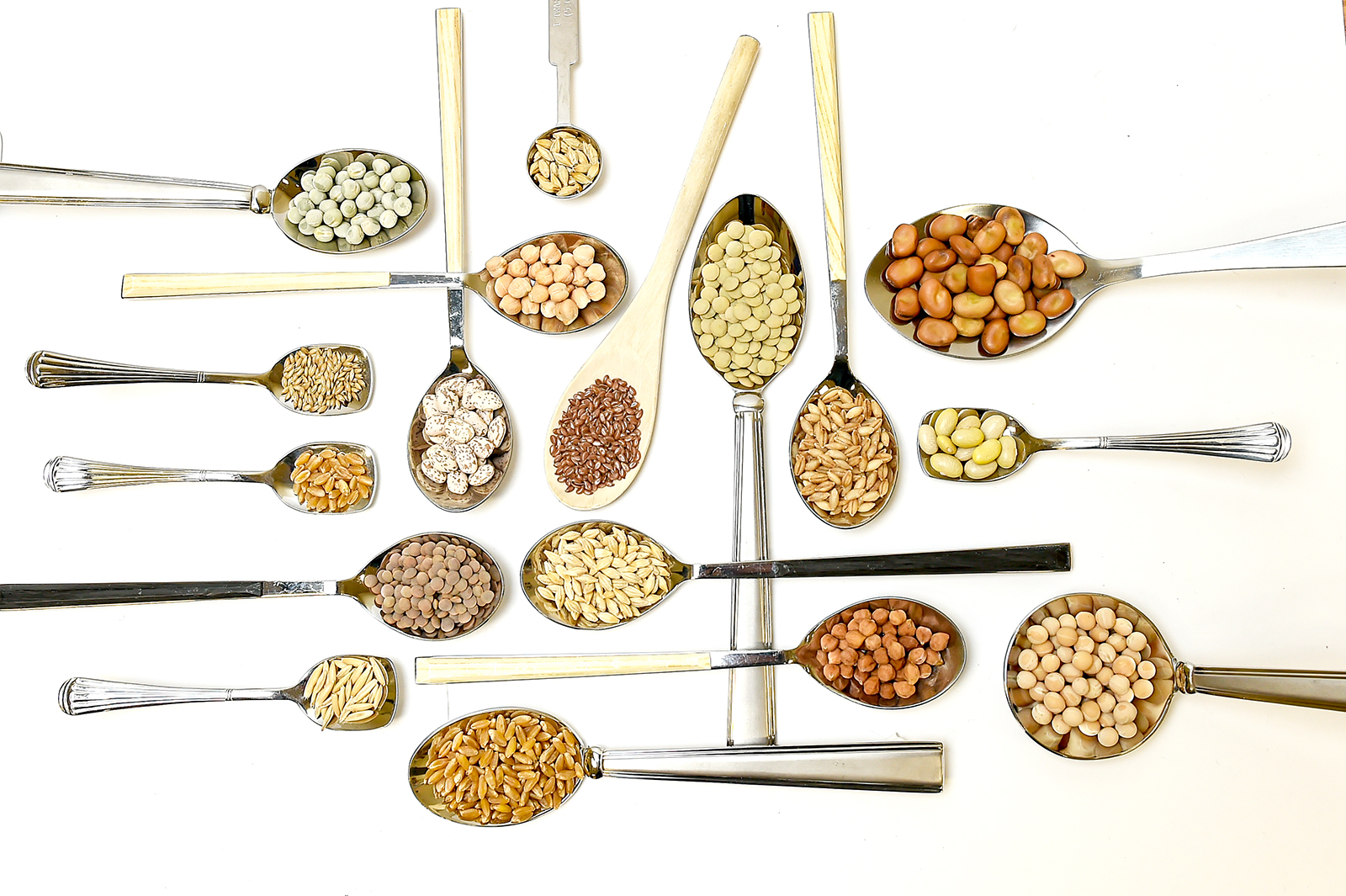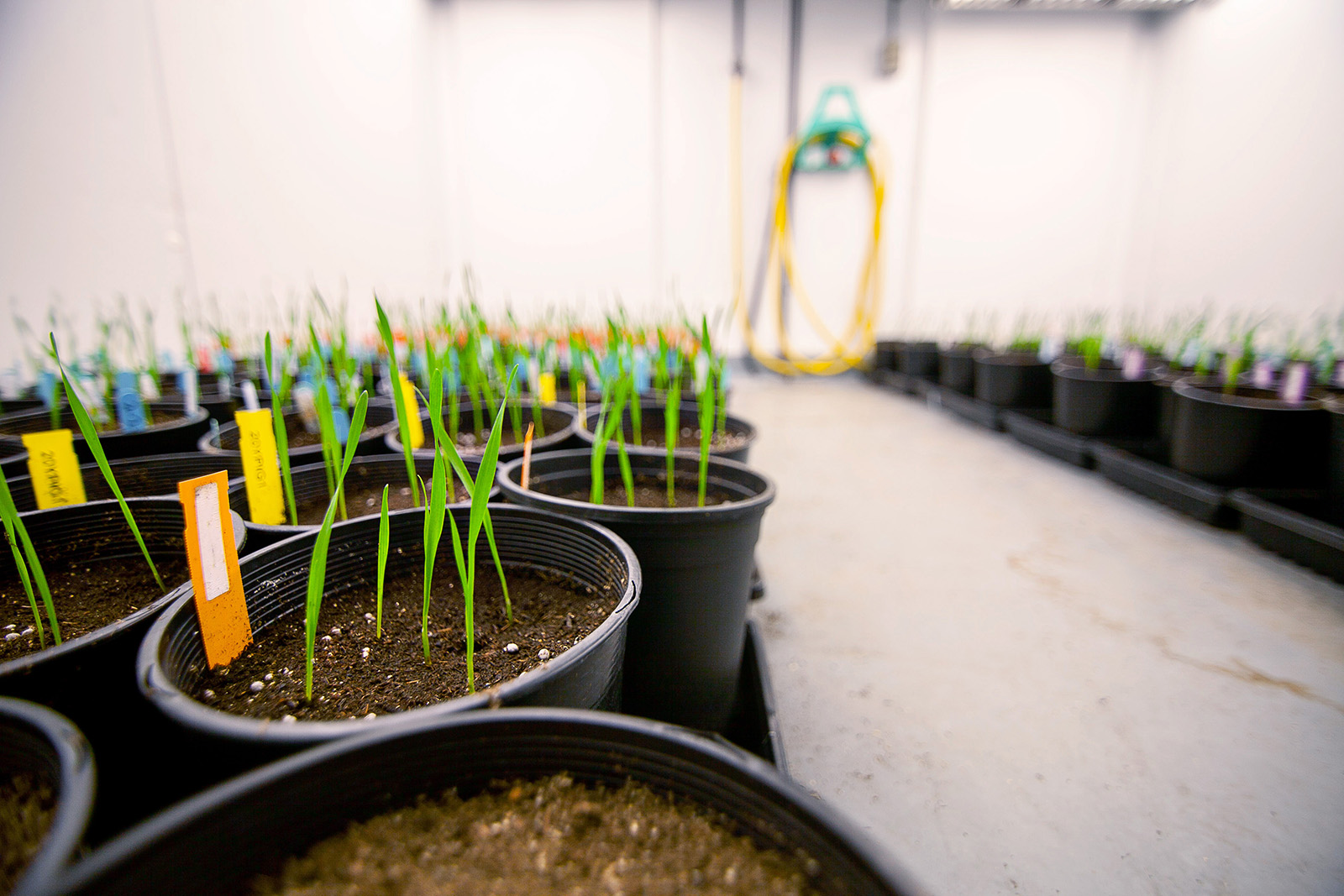
2010s
CDC varieties help producers reap billions of dollars in profits.
By Kathy Fitzpatrick
As the end of its first half-century neared, USask’s Crop Development Centre (CDC) refreshed its aim. Integration of advanced technologies became the focal point of a new vision and five-year strategic research program. The CDC was to be “a world-class crop improvement Centre that delivers crop genetics for society,” its mission to “develop crop varieties that bring value to the agriculture sector, through the development and application of scientific knowledge and technologies, in partnership with stakeholders across the agriculture value chain.”
Long before its fifth decade of operation, the CDC had succeeded spectacularly in fulfilling its mandate: to improve the profitability of western Canadian farmers and the agri-food industry by improving existing crop kinds and developing new uses for them, as well as developing new crops. The new vision and mission built on that.
“A new platform for making improvements in crops,” is how former managing director Dr. Kofi Agblor (PhD) spoke of genomics (the study of genes and their functions), and its importance in the work of the CDC. He was at the helm from 2012 to 2019, as the CDC was charting its path into the future.
A renewed emphasis on genomics, and scientific technology in general, reflects some of the most distinguishing work of the CDC’s fifth decade. The 2010s were marked by ground-breaking projects to sequence the genomes, or map the genetic code, of several of Saskatchewan’s most important crops.
Wheat breeders Dr. Pierre Hucl (PhD) and Dr. Curtis Pozniak (PhD) reaped international renown as co-leaders of the Canadian Triticum Advancement through Genetics Project (CTAG), whose team contributed to an international partnership aimed at sequencing the wheat genome, an effort coordinated by the International Wheat Genome Sequencing Consortium (IWGSC). CTAG’s work also involved developing tools for targeted sequencing of Canada’s best wheat cultivars, paving the way to identify gene sequences that contribute to desirable traits.
When the pair submitted their project proposal, Pozniak had been looking for an opportunity to build the infrastructure for genomic-assisted breeding. CTAG was when “we really got going with genomics,” Pozniak explained.

Pozniak went on to co-lead Canadian Triticum Applied Genomics (CTAG2) with Dr. Andrew Sharpe (PhD) Sharpe of National Research Council Canada. CTAG2 led to the development of genomic tools for wheat “that were critical to develop DNA markers that we now use quite extensively in breeding,” Pozniak said. His team sequenced 15 different varieties, a sampling from different countries. Comparing them is important in understanding what makes them different from each other, and how they have been shaped by breeding.
Similarly, other CDC plant breeders forged ahead in collaborations to sequence lentil, pea, chickpea and flax genomes. Meanwhile, a CDC oat variety was the choice of a private sector partnership in its release of the first-ever sequencing of the full oat genome for use in opensource applications.
Important as these achievements are, Pozniak regards genome sequencing as an additional tool, not a replacement for the traditional plant breeder’s method of field-based selection. Meanwhile, he is also examining the potential of other emerging technologies, such as digital phenotyping, which includes the use of drones and special cameras to capture details in field trials that the human eye can’t see.
“Crop breeding is about managing resources, germplasm and technology and putting those together in the right package to identify superior varieties that we can transfer to producers,” Pozniak explained. Pozniak now takes the lead in managing those resources. In July 2020 he became the CDC’s new director, taking the reins from Hucl, his mentor and interim managing director. The role at the top has once again been split in two, with the appointment of Marissa Janssen as CDC Manager. Pozniak is focusing on the organization’s strategic agenda and vision, while Janssen is overseeing management of the CDC brand and its day-to-day operations. “If we’re going to continue to grow as an organization, now is the time to make that organizational shift,” Pozniak said.
Looking back, Agblor described the CDC’s fifth decade as a time of accelerating, exponential and unparalleled growth in research activities. In the 2019-20 fiscal year, for example, the CDC carried out 116 research programs and projects worth $30.1 million - compared to the operational budget of $19.8 million just five years earlier. The challenge was to marshal the resources to keep pace. “What kept me awake at night was, how do you maintain that growth?” Agblor said.
To raise awareness of the CDC’s value and attract greater support, the organization commissioned independent consultants to prepare an economic impact report, which was released in 2016. Some key figures underscore the CDC’s enormous contribution in the prairie provinces. From 1991 to 2015, the crop varieties it developed and released increased producer profitability by $3.8 billion. For every dollar invested in CDC plant breeding, producers saw a seven-fold return. The authors also estimated that CDC plant breeding added an average of $29 million annually to the prairie economy and created an average of 258 new full-time jobs each year.
The impact on production and markets continues. Among other research highlights of the past decade: Dr. Tom Warkentin (PhD) worked with a Canadian Light Source team, using the synchrotron to assess the nutritional value of pea varieties he developed. A team comprised of Warkentin, along with Dr. Bert Vandenberg (PhD), Dr. Kirstin Bett (PhD) Dr. Bunyamin Tar'an (PhD) and Dr. Sabine Banniza (PhD) set a goal to provide at least two pulse crop options for every farm in Saskatchewan, and to increase pulse production from 12 to 20 per cent of total seeded acres in the Prairies.

Dr. Aaron Beattie (PhD) developed a malting barley, CDC Bow, which became the feature ingredient in a contest exemplifying farm-to-table production. Locally grown Bow was small-batch malted at Maker’s Malt in Rosthern SK. It was then distributed to 14 Saskatchewan craft breweries who were challenged to brew a unique beer with it.
Dr. Randy Kutcher (PhD) and Dr. Lipu Wang (PhD) developed a fast and accurate process to aid researchers in testing for the mycotoxin DON produced by fusarium head blight. Dr. Bill Biligetu (PhD),the CDC’s forage breeder, is working on salt tolerant forage grasses, important to farmers dealing with high soil salinity resulting from weather extremes. And the list goes on.
An essential task in sustaining the CDC’s operations is the maintenance and expansion of the infrastructure vital to this work. One of the major projects of the decade was a revamp of the Controlled Environment Facility, also known as the phytotron. Located in the Agriculture Building, the phytotron features 183 growth chambers - an array of reach-in cabinets and walk-in rooms that can be programmed to produce various environmental conditions, such as qualities and intensities of light, ranges of temperature and humidity. They are crucial to plant-breeding work.
But as the CDC approached its fifth decade, the phytotron’s refrigeration system was gradually failing, and the facility’s operation fell to about 60 per cent capacity. Bringing the phytotron back up to full operation was the largest project undertaken since it was built in 1990. “It was quite a bit of a juggling act,” said general manager Adam Harrison, who oversaw the project. The challenge was to get it done as quickly as possible so usage of the facility could be ramped up again, but to also proceed in such a way that crop research could continue.

To that end, the revamp was done in three phases. Work began in the summer of 2010 with replacement of the lighting, starting with the 40 per cent of the chambers that were unoccupied. All of them were serviced and cleaned prior to the lighting retrofits. “It was time consuming but we needed to do it in a manner that we didn’t shut down completely,” Harrison said.
The new efficient lighting cut energy consumption by half, a cost saving that helped pay for the retrofit. It also reduced the heat load, creating more redundancy for the chillers (refrigeration equipment) in case any had to be taken down for repairs.
The next two phases, replacement of controllers and chillers, were completed by the end of 2013. The total cost of around $11.3 million was covered through contributions from the university, along with government and private sources.
In addition to the phytotron revamp, an irrigation system to promote disease development and to protect breeding materials during periods of extended drought was expanded in the fall of 2018, with the purchase of a linear system for the Campus field located south of 108th Street. Equipped with the latest technology including GPS tracking and remote operation, the new system was used extensively during the extremely dry spring of 2019.
A major international event that drew world attention to the CDC was held in July 2019. Canada hosted the 1st International Wheat Congress in Saskatoon. Chaired by Pozniak, it attracted more than 800 delegates to the city. Pozniak agrees the past decade has been one of building and expanding on the CDC’s original vision. Faculty have become recognized not only as leaders in crop breeding and releasing varieties to western Canadian producers, but are also “recognized internationally as world-leading scientists that are creating knowledge, all with the aim to facilitate development of improved varieties.”
The challenge is more exacting than ever – in this era of population growth, climate change, and evolving markets and technology. Not only must varieties yield more and be easier to harvest. They must also offer improved nutrition and safety, and suit new processing methods and industrial uses.
